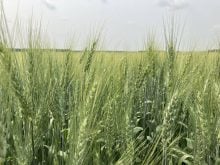In the past, we built dwellings for shelter or utility either for ourselves or our animals. Later we also built them for style and show.Building green or green building are terms that describe an increasing awareness that we must consider in constructing our buildings – for our sake and that of the planet.Building green means thinking about where a building is built, how it is designed and constructed, how resource use can be minimized in its construction and operation, and how it can enrich the lives of those who will live or work in it. It means less emphasis on impressing passersby and more on serving the building’s users.In building green, it is apparent that what is good for the environment is also best for the occupant. For example, south-facing windows allow more light into a building and provide free heating, which is good for the environment. It also provides natural lighting for the occupants.Appropriate climatic and site design – solar access is paramountGiven that a building is built to last a long time, it makes sense that we build in sensible locations with layout and orientation appropriate to the regional climate. It is amazing the number of buildings, which are located on farms, acreages and south accessible urban lots, that are sited without reference to the sun.Sometimes the south wall of the house is a garage or it has no windows. To maximize exposure to the sun for passive and active solar application, the long axis of the building must be oriented east-west, incidental in most subdivision or acreage development layouts. On the farm, we have greater choices for effective positioning.There is no greater bargain than orienting a building so that it can make the best use of the sun’s warmth and light.Design for needs, not fashionWhile family size has been halved, house sizes have doubled. We now have four times more area per person than our predecessors had a generation or two ago.Our cities sprawl over productive and precious farmland, making utilities and roads more costly. New houses, while more efficient per sq. metre, are so large that overall energy savings are lost. And there is a lot more area to service and clean.What we gain in quantity, we have given up in quality. Buildings are large and ostentatious with ill-designed internal spaces.We impress our neighbours but condemn future generations to high maintenance and operating costs.Building green means considering building size. Building smaller saves money in construction and in operation – money that can be used to hire a consultant to create a better designed building.Efficiency in constructionUsing a building that is already there takes advantage of the embodied energy and materials in existing structures. There is a cost to removing a building from a site and adding it to a landfill.Materials on site such as wood or bricks can be reused in the renovations or new construction.Even in new construction, one can decrease the energy involved in construction by sourcing materials as close to the site as possible. Using advanced building techniques in stud construction can also save on building material.Building for the longer termThere are some positive building programs such as R-2000, EnergyStar and LEED, but they are optional and most builders do not build to these standards. For many builders, two-by-six construction is considered advanced. We need to build better, including R 40 walls (including exposed basement) and R 70 ceilings.Using improved roofing materials that will last several generations saves long-term energy. Top quality windows will maintain their seal and energy efficiency longer. Conservation of water can include efficient toilets and faucets but also cisterns to capture rainwater.Building materials and designWell-designed buildings serve their occupants well, both practically and esthetically.Making buildings more airtight has increased energy efficiency but also raised concerns about air quality. Many materials have significant off gassing. We can mitigate that by the selective use of construction materials and effective air-to-air heat exchangers.Building green means constructing a building that is sustainable. It is also enjoyable for its occupants because it works well, looks good, is easy to keep and lasts a long time.Future generations will thank you for the effort.
Read Also

Why feds imposed EV tariffs
Moe and Kinew have a fight on their hands when it comes to eliminating the EV tariff. Canada has to worry about pissing off the U.S. and Mexico and hundreds of thousands of auto workers.
Building green
The two guiding principles: * what is good for the environment * what is good for the occupants, both in the short and long termWill Oddie is a renewable energy, sustainable building consultant with a lifetime interest in energy conservation. To contact Oddie, send e-mail to energyfield@producer.com.














